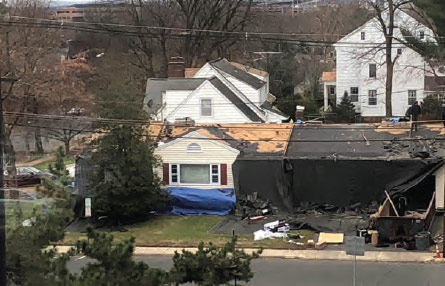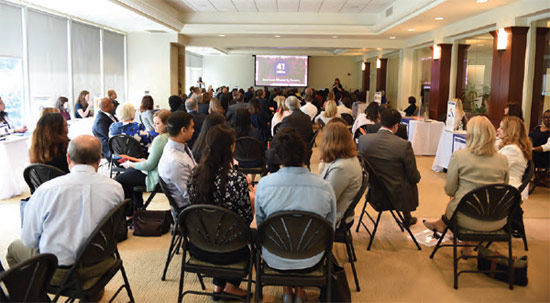Neighborhood & Built Environment

In order to improve the safety of neighborhoods and ensure that New Jerseyans are able to afford safe and affordable housing, the SICI team has developed targeted interventions that address:
“Families that expend greater than 50 percent of their household income on housing are less likely to afford the cost of food and health care, leading to food insecurity and poor health outcomes.”
SAFE & AFFORDABLE HOUSING
Research demonstrates a strong correlation between housing and improved health, social and economic outcomes. Individuals who have safe, affordable, and stable housing have:
- Improved clinical and mental health outcomes
- Reduced stress
- Reduced incidence of food insecurity
- Improved educational attainment
Families that expend greater than 50% of their household income on housing are less likely to afford the cost of food and health care, leading to food insecurity and poor health outcomes. When affordable and safe housing becomes overwhelming for individuals and families, it often results in homelessness. Homelessness contributes to higher emergency room utilization and hospital admission rates, with longer lengths of stay. In 2017, more than 8,500 individuals in New Jersey were homeless, with 20% residing on the streets. Homeless individual have higher rates of cardiovascular disease, diabetes, pulmonary disease, pneumonia, HIV and tuberculosis.
Finally, ensuring that communities have access to the right resources are paramount to good health outcomes. Neighborhoods that include access to local amenities, safe walkable streets, and accessible infrastructure are critical to addressing the social determinants of health. RWJBarnabas Health is committed to build and improve the communities in which it operates.
2019–2020 GOALS & KEY OBJECTIVES
GOAL 1
Partner with community-based organizations to create a minimum of 300 safe
and affordable housing units in RWJBH region, as evidenced by the rehabilitation
of existing affordable units, development of new units, assessment and
remediation of unsafe housing.
Housing is a critical element to achieve healthy outcomes. RWJBarnabas Health will collaborate with community partners and state government agencies to increase safe and affordable housing units in vulnerable communities.
-
Support the creation of a minimum of 100 affordable and/or supportive housing units.
- Support organizations that are committed to safe and affordable housing through grants, loans, in-kind support, and skills-based volunteers.
- Leverage RWJBH funding, at a minimum rate of 3:1, by actively securing funding from government, corporations, and foundations to develop affordable and supportive housing opportunities in targeted RWJBH geographies.
- Collaborate with the RWJBH Foundation to actively track all foundation, corporate, and government grants that support housing initiatives across the System.
- Determine current baseline funding provided for housing across the system.
-
Advocate for sound federal, state, and local policies to reduce homelessness
and improve access to affordable housing within the State of New Jersey
and the nation on an on-going basis.
- Develop effective and consistent communication strategies that highlight the need for safe and affordable housing that resonates with key stakeholders, including policy makers, across all levels of government.
- Collaborate with housing entities within the state to understand the housing policy agenda and determine which items are beneficial to RWJBH and its stakeholders.
-
Assess, and remediate as appropriate, a minimum of 200 homes to ensure
a safe and healthy environment for residents.
- Collaborate with RWJ University Hospital New Brunswick to implement New Brunswick Healthy Housing Collaborative (NBHHC), on an on-going basis.
- Evaluate NBHHC to determine project effectiveness and refine as appropriate.
- Replicate the NBHHC model in a minimum of one additional RWJBH community
GOAL 2
Improve commercial corridors and address public safety concerns in targeted
neighborhoods in the RWJBH region in collaboration with local, state,
and national partners, as evidenced by new business development, reduced
crime, and walkable neighborhoods.
Safe and walkable neighborhoods are critical to building stronger communities. RWJBarnabas will work with organizations such as LISC and Special Improvement Districts to improve neighborhood aesthetics, but more importantly ensure that communities are equipped with the resources needed by those that live and work therein.
VIOLENCE PREVENTION
Every sixty minutes, seven people in America die from violence-related injuries. In 2016, nearly 19,000 individuals died as a result of homicide and more than 45,000 from suicide. Combined, suicide and homicide cost the United States economy $87 billion in health care costs and lost work; costs to the criminal justice system, correctional facilities, and the emotional toll on families and communities exponentially increase these figures.
Mirroring the nation, violence is a public health concern in New Jersey. In the Garden State in 2016, there were 395 homicides, making it the second leading cause of death for individuals ages 15 to 24. Eighty percent of all homicide victims were young black males. Among female homicide victims, 40% were killed by former or current intimate partners. Conversely, 688 individuals committed suicide in New Jersey; the large majority of which were white males.
Community violence has risen to epidemic proportions. While the immediate concern is morbidity and mortality as a result of violence, RWJBH’s SICI practice is focused on the indirect effects and the root causes of violence in the communities that it serves. Violence has been associated with:
- Chronic disease (heart disease, asthma, stroke, cancer, and more)
- Mental health problems (PTSD, stress, anxiety, depression, and more)
- Lower quality of life
- Increased risk of perpetrating violence
2019–2020 GOALS & KEY OBJECTIVES
GOAL 1
In coordination with diverse stakeholders, develop a strategic framework
to address community factors to reduce community violence in the RWJBarnabas
Health region, as evidenced by development of a strategic framework that
includes but is not limited to objectives and tactics derived from primary
and secondary research and stakeholder community input.
Community violence is a public health concern for individuals, families and communities. Targeted, integrated, data-driven strategies that involve diverse community stakeholders will guide the Social Impact and Community Impact practice to partner in addressing this pervasive issue.
-
Complete a literature and programmatic review to identify evidence-based
programs that have successfully reduced violence.
- Engage with local, state and national leaders identified through the literature review to further understand outcomes, opportunities, and challenges.
- Identify best practices through collaborative efforts which evidence an ability to reduce violence and address disparities.
-
Conduct focus interviews with key organizations and community leaders to
understand violence, its unique effect on communities in New Jersey, and
suggested strategies for addressing the root causes of violence.
- Enhance the system’s efforts with community collaboratives, such as the Safer Newark Council, the Jersey City Anti-Violence Coalition Movement, the New Brunswick Schools Teen Dating Violence Awareness Initiative and others.
- Engage and leverage existing engagement with populations especially exposed to violence (veterans, law enforcement, youth, etc.,) within RWJBH and the external community to support violence prevention initiatives.
- Identify which community factors RWJBH is best suited to address including, but not limited to, residential mobility, high levels of unemployment, and/or behavioral health assisted conflict resolution.
- Host a minimum of one forum that discusses violence in the community and includes a diverse set of stakeholders.

GOAL 2
Convene a diverse, multi-disciplinary group of individuals to identify/develop
and implement a curriculum designed to teach resiliency, while simultaneously
addressing symptom identification of at-risk youth, with a focus on violence
prevention, as evidenced by reduced incidence of violence in targeted
communities and improved knowledge among youth in targeted geographies.
The SICI practice will work with a diverse group of stakeholders to jointly identify proven strategies and implement them throughout the system’s service areas.
-
Complete a literature review to identify evidence-based curricula that
have successfully reduced violence in communities.
- Converse with state and national leaders identified through the literature review to further understand outcomes, opportunities, and challenges.
- Conduct focus interviews with key organizations, state and local government entities, law enforcement, local and national leaders to understand the behavioral health effects of violence in communities, what is currently being done to achieve a wellness state, and how RWJBH can assist in addressing from a public health lens.



